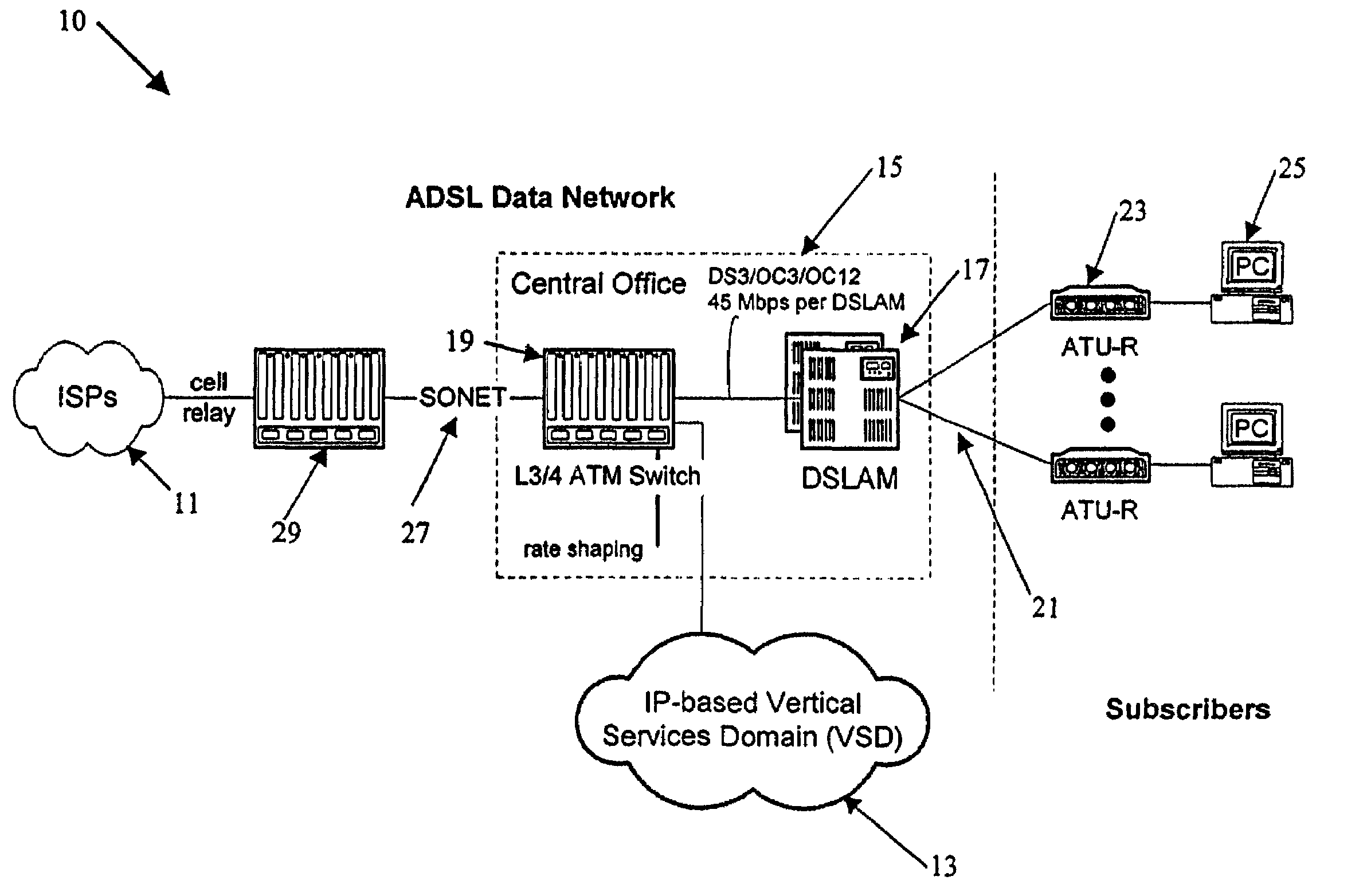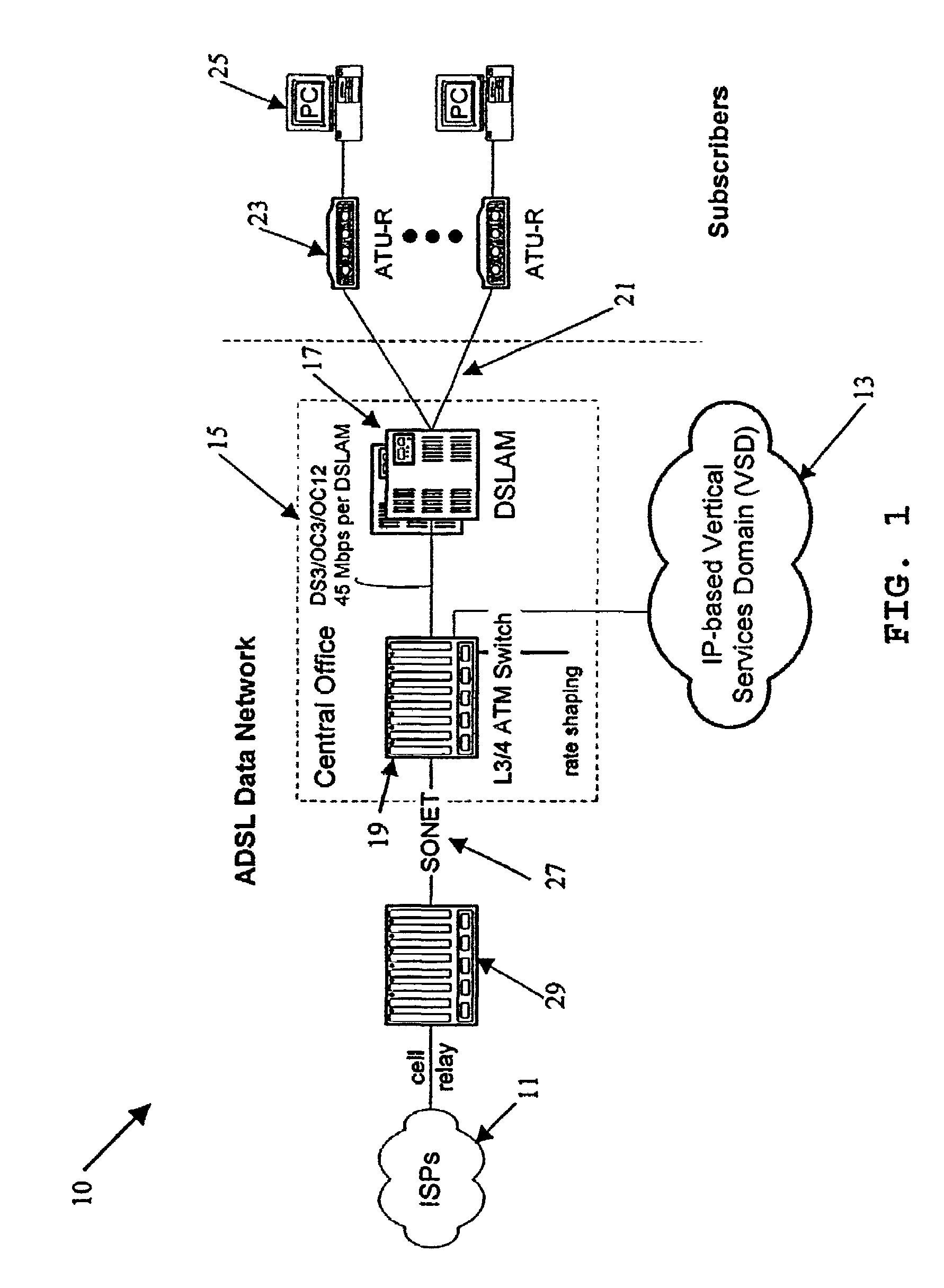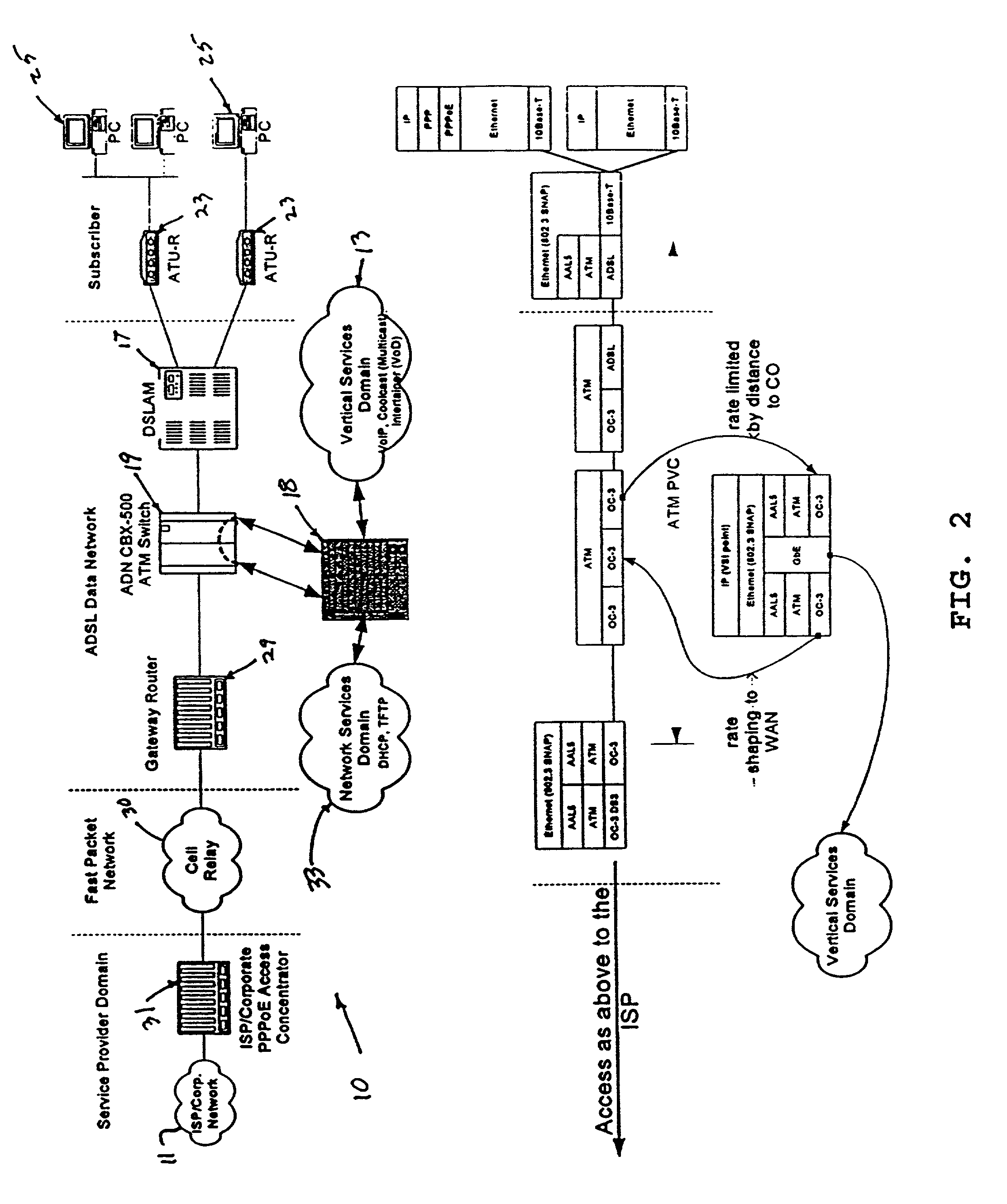However, the common
local area network architectures require installation of specialized wiring and use of specific wiring topologies.
High speed links enabling such
wide area access from a LAN domain, for example using T1 lines, are quite expensive and justified only for hi-end commercial users.
The current design goals of DSL data networks for
Internet access do not support high-end vertical services, that is to say services demanding IP-based applications that require assurance of some level of
quality of service (QoS).
Streaming video has similar requirements, and in addition, requires
high bandwidth.
For example, current implementations supporting ATM
cell traffic employ the Unspecified
Bit Rate (UBR)
class of service, which does not provide any bandwidth or
delay guarantees.
Consequently, transport of video materials through such DSL data networks inflicts video delays, loss of audio / video synchronization, and image fragmentation.
Furthermore, lengthy bandwidth intensive sessions for video or other
broadband applications may degrade the
throughput to all other subscribers served through a shared node, such as a gateway
router or a concentrated link.
For two-way video, upstream will have even worse quality and
throughput problems, due to the best effort nature of the DSL data network implemented for
Internet access and because the upstream bandwidth is significantly less than that of the downstream channel.
In practice, this is a relatively long or
wide area link using expensive interoffice facilities.
Although it was originally envisioned that ATM would support switched logical channels or virtual circuits, to date, such logical switching has proven impractical to implement and administer.
The virtual circuits to the ISPs, however, do not have sufficient capacity to simultaneously carry all subscriber traffic at the maximum rates of the customers' subscriptions.
The maximum
grade of service offered to an individual subscriber depends on the rates for which the subscriber's line can qualify, although the subscriber may opt for a lower rate service since the higher-rate service is more expensive.
The permanent virtual circuits provide an unspecified
bit rate (UBR) service and do not guarantee any minimal amount of
delay or
jitter.
Also, because the rates are set by subscription, the service tends to be relatively inflexible.
Such a migration strategy to implement new services creates severe problems.
If the rate of the requested video exceeds the customer's subscription rate, the customer could not view the video in real time during the download.
Even if the rate of the requested video is below the customer's subscription rate, loading in
the Internet or the local
access network may impose delays and / or
jitter in communication of some segments of the requested video.
It might be possible to increase the capacity of the links 119 and / or the hubs 121; however, this tends to increase the carrier's recurring costs and often makes the overall service(s) of the ADN network economically impractical.
Administration and provisioning of one
virtual circuit per subscriber is already complicated, and the number of virtual circuits through any given ATM node is limited by current equipment designs.
Expanding the number of permanent virtual circuits per subscriber to support multiple QoS tiers of service therefore would be quite expensive, and the management thereof would become a
nightmare.
In point of fact, few nodes on the public Internet actually support any type of QoS.
Hence, even if the ADN supported a desired QoS, most subscribers would not benefit from that service because their communications over the public Internet would have no QoS guarantee, and would suffer from the usual problems of latency and jitter.
Consequently, current deployments of ADSL-based data networks, such as shown in FIGS. 8 and 9 generate many customer complaints.
From the customer perspective, the service does not deliver the data rates that the customer pays for on a consistent basis.
The customer typically blames such problems on network equipment failure.
In fact, most of the problems already are due to
virtual circuit congestion problems, of the kinds outlined above.
Essentially, the ADN network is crippled by the unpredictable nature of the service levels that the customers perceive due to congestion on the ADN and on the public Internet.
Also, with this approach, because all of the major service elements are implemented in servers accessible to
the Internet, all of the services are subject to severe security risks.
However, a consequence is that any such
server is accessible to and thus subject to
attack from any
hacker having Internet communications capabilities.
Popular services, particularly those generating substantial revenues, become prime targets for
attack.
Another area of problems is that the ADN does not offer the carrier any technique for offering its own
differentiated service applications.
 Login to View More
Login to View More  Login to View More
Login to View More 


